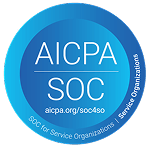Living on a student budget in the U.S.: Tips you won’t find on TikTok
Budgeting for college studentsisn’t about skipping coffee or couponing your way through grad school. It’s about making smart, sustainable choices that protect your mental health, academic success and financial future – all while navigating a country you may be brand new to.
TikTok might show you how to turn instant ramen into gourmet meals, but it rarely talks about budgeting for visa fees, curricular practical training (CPT) delays or the shock of first-month rent. That’s where this guide comes in.
Here’s how to actually live well on a student budget in the U.S. – without going broke, burning out or relying on tips that don’t apply to your life.
Set up your financial baseline before your first class
Most students studying overseas underestimate how expensive the first 30–60 days in the U.S. will be. Before classes even start, you’ll need to budget for:
- Housing deposits -often one to two months’ rent upfront
- Furniture or basic supplies, especially if you’re not in furnished housing
- Phone plans, transit passes and bank fees
- Visa-related expenses – appointment fees, document printing
- Textbooks and software required from day one
Create a one-time “startup budget” and treat it separately from your monthly living costs. This helps you avoid financial panic in the first weeks and gives you a more accurate view of what you’ll need.
Monthly budget strategies that work in the real world
Once you’re settled, your study abroad budgetneeds to shift into maintenance mode. Here are the practices that actually make a difference:
Build a 50–30–20 framework (with a student twist)
- 50% for essentials – rent, food, transit, bills
- 30% for school + professional growth -books, workshops, clothing for interviews
- 20% for savings or unexpected costs
If you’re relying on international graduate student loans or limited income, this may look more like 70–20–10 – but the structure still helps.
Don’t chase the cheapest rent – chase total value
A cheaper apartment far from campus might cost more in bus fare, rideshares or time lost. Run the full math, including location, utilities and safety.
Use student status to your advantage
Many banks, software tools, transit systems, museums and even grocery stores offer student discounts – some only if you ask. Keep your university ID on you and always check.
Limit subscriptions and group expenses
Streaming platforms, rideshares and delivery services drain budgets fast. Find roommates who’ll split accounts or rotate meal prep. Small decisions add up.
Find flexible income, if your visa allows
If eligible under CPT or on-campus work, look for roles that align with your studies. Even tutoring in your native language can offer strong hourly rates with minimal hours.
Budgeting through uncertainty
International students face financial variables most domestic students don’t – like waiting on EAD (employment authorization document) approval, renewing a visa or job delays during optional practical training (OPT).
Here’s how to prepare:
- Keep a small emergency fund, even if it’s just US$300–US$500.
- Plan for delayed income if you’re starting OPT or a summer internship.
- Expect fluctuations in groceries, rent or currency conversions depending on where you study.
- Know your visa work limits so you don’t rely on income you’re not allowed to earn.
Budgeting isn’t just about spending less. It’s about managing volatility and creating a system that won’t collapse if your plans shift.
Smart financing tools when budgets fall short
Even the most responsible students hit moments where budgeting isn’t enough. Maybe it’s a surprise move, tech issue or the time between graduation and your first job.
That’s where flexible financing can help bridge the gap.
MPOWER Financing offers no-cosigner student loans designed specifically for international students in the U.S. and Canada. You can borrow between US$2,001 and US$100,000 to cover:
- Tuition
- Housing -only as a university-invoiced expense in Canada
- Tech upgrades, insurance or other out-of-pocket education related costs
MPOWER also provides free access to Path2Success, a support platform with tools to help students job-hunt, track expenses and plan for OPT or STEM OPT transitions. With transparent loan terms and fixed interest rates, you can budget with confidence – even if your financial needs evolve during your degree.
Real budgeting is about freedom, not just frugality
Living on a student budget doesn’t mean saying no to everything. It means making intentional trade-offs so you can say yes to the experiences and outcomes that matter most – your education, your career and your stability.
Start with a system that fits your visa status, academic pace and cultural reality. Build flexibility into your plan. And when needed, don’t be afraid to lean on tools and education loan financing designed for students like you.

